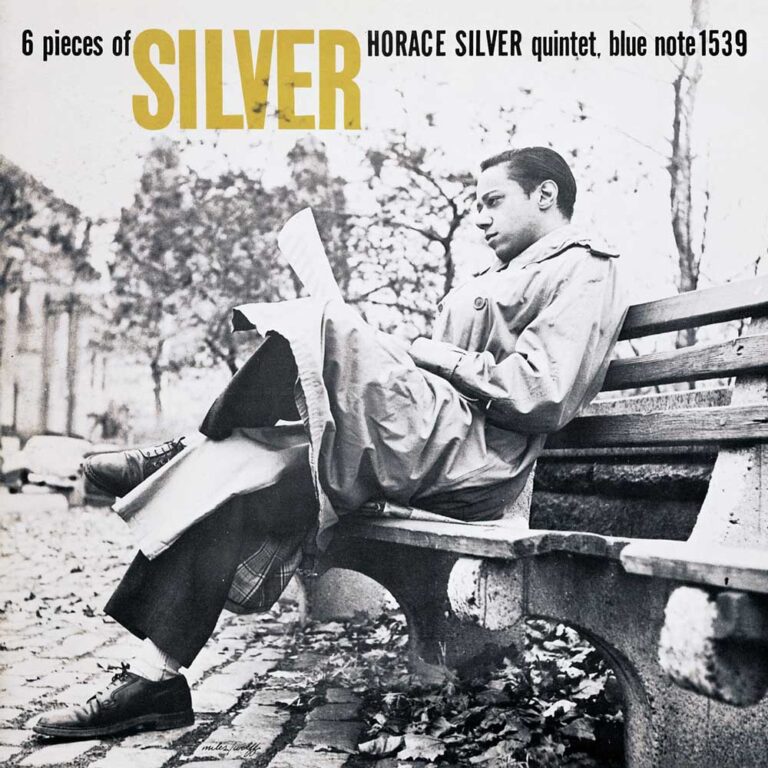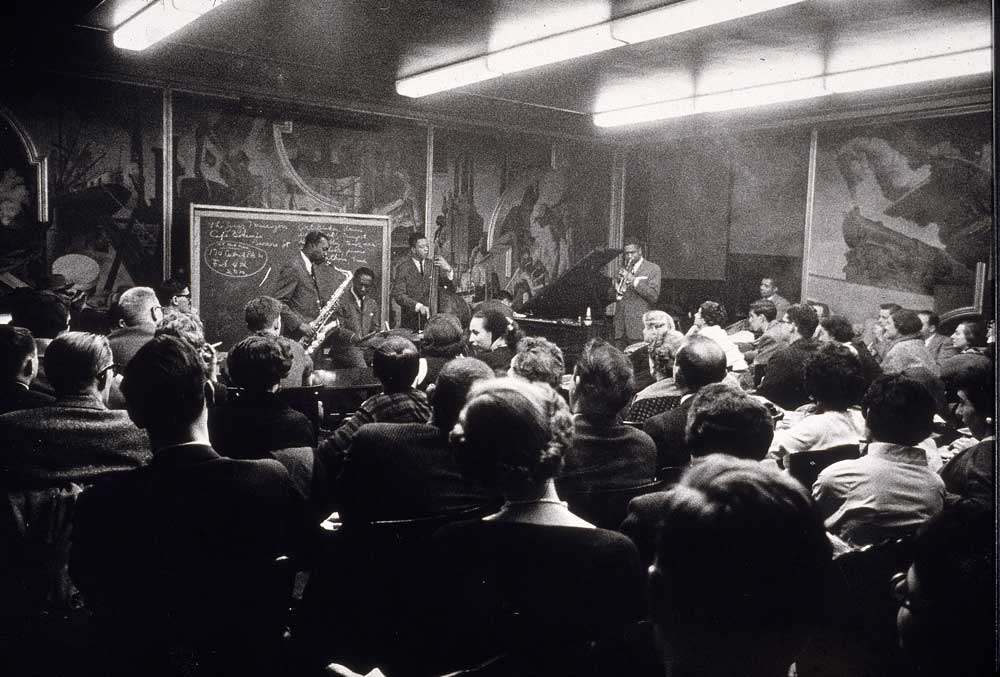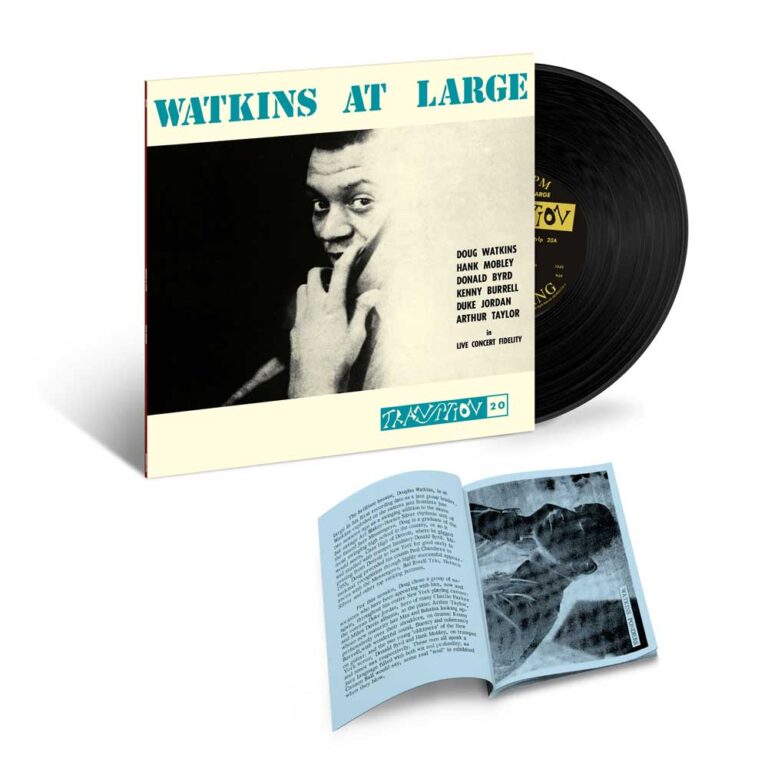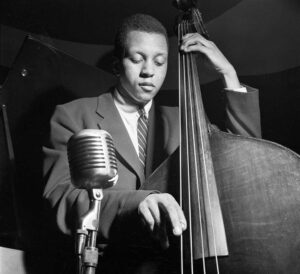The history of jazz is sadly littered with the names of musicians taken far too soon. In that long list is double bassist Doug Watkins who was killed in a car accident on February 5, 1962, at the age of 27 while travelling to San Francisco to perform with drummer Philly Joe Jones.
While Watkins may not be widely known, as an original member of the Jazz Messengers and sideman on a raft of sessions for Blue Note, Prestige and Atlantic artists, he deserves his place in this history of jazz. And that is before you get to the two wonderful albums he recorded under his own name “Watkins at Large” from 1956 and “Soulnick” from 1960.
Born in Detroit in March 1934, Doug Watkins was very much a musical son of the city, accompanying such future legends as Donald Byrd and visiting musicians like Jackie McLean.

DONALD BYRD Byrd In Flight
Available to purchase from our US store.After moving to New York in the mid ‘50s, Watkins appeared on a host of famous Blue Note sessions recorded at Van Gelder Studio. Among them were three albums with Hank Mobley including his 1955 debut with his quartet alongside Horace Silver and Art Blakey, Lee Morgan’s “Candy”, and Donald Byrd’s “Fuego” and “Byrd in Flight.“ On the Byrd penned “Ghana” from that 1960 session, Watkins plays one of the great Blue Note openings, a serious modal hook that sets the scene for Donald Byrd’s early masterpiece.
With Byrd furthering his claim as Blue Note’s new star with a sound all his own, this essential album saw Watkins share bass duties with Reggie Workman alongside Hank Mobley and Jackie McLean on tenor and alto (with Watkins appearing on the Mobley tracks and Workman on the McLean ones), Duke Pearson on piano and the drums of Lex Humphries.

HORACE SILVER Six Pieces Of Silver
Available to purchase from our US store.Alongside the many Blue Note sessions Watkins appeared on were a raft of releases for other labels such as “Presenting… Jackie McLean: The New Tradition” the alto saxophonist’s debut for Ad Lib and most famously Sonny Rollins’ “Saxophone Colossus” for Prestige. But Watkins is best known for his tenure with the Art Blakey-Horace Silver iteration of the Jazz Messengers appearing on their Blue Note debut from 1955 as well as Silver’s follow up for the label “6 Pieces of Silver”.
According to Horace Silver’s autobiography, “Let’s Get to the Nitty Gritty”, he and Watkins left Art Blakey’s Jazz Messengers due to the harassment faced at venues because of the drug problems of other members. As an interesting aside when Charles Mingus decided to move to piano briefly in 1961 it was Watkins he called on as his bass player.


DOUG WATKINS Watkins At Large
Available to purchase from our US store.Watkins was only 22 when he led the recording session for his debut album “Watkins at Large” recorded in New York on December 8, 1956, for Tom Wilson’s Boston-based label Transition.
For one of the less celebrated hard bop albums of the mid ‘50s he called on his old friend Donald Byrd on trumpet, Duke Jordan on piano, Kenny Burrell on guitar, and Art Taylor on drums. In such serious company Watkins’ bass really shines on this date that crosses from the driving hard bop of “More of the Same” and “Phinupi” to the haunting blues of “Panonica”.
He followed it in 1960 with the album “Soulnik” for the New Jazz label with his quintet that included Yusef Lateef and other players he knew from his days in Detroit fellow bassist Herman Wright and pianist Hugh Lawson with drummer Lex Humphries from the “Byrd in Flight” session.
Original copies of “Watkins at Large” on Transition go for between £500 and £1,500 so grab this Blue Note Tone Poet edition in a deluxe tip-on jacket with an eight page booklet.
Read on…Richard Davis – The “Astral Weeks” bassist’s best Blue Note albums
Andy Thomas is a London based writer who has contributed regularly to Straight No Chaser, Wax Poetics, We Jazz, Red Bull Music Academy, and Bandcamp Daily. He has also written liner notes for Strut, Soul Jazz and Brownswood Recordings.
Header image: Doug Watkins. Photo: Francis Wolff / Blue Note Records.


